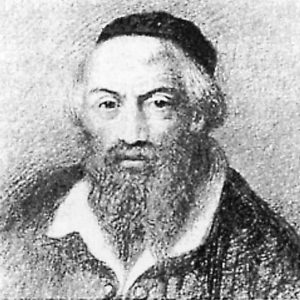Halakhah
 Although literacy rate among Jews was still very low, and only a few could read and write, the early modern period produced a number of influential rabbis and texts that shaped Judaism for centuries to come. One of the most notable creations of the period was the Shulhan `Arukh. Although initially written as an aid for rabbinic students in modern times, it became the established code of Jewish law. The Shulhan `Arukh was written by Joseph Karo (1488-1575), a rabbi and kabbalist from Safed. It was first published in Venice in 1565. Karo based his compendium on an earlier code of Jewish law, Arba`a Turim (“the Tur”), on which he had written a commentary known as Beit Yosef. The basis for Karo’s rulings was Sephardic observance. Karo’s Shulhan `Arukh quickly reached Poland, where Moses Isserles (the ReM”A) (1529-1572), recognizing the value of the work, wrote a commentary on Karo’s code in which he set down Ashkenazic customs and practices, and annotated their halakhic sources.
Although literacy rate among Jews was still very low, and only a few could read and write, the early modern period produced a number of influential rabbis and texts that shaped Judaism for centuries to come. One of the most notable creations of the period was the Shulhan `Arukh. Although initially written as an aid for rabbinic students in modern times, it became the established code of Jewish law. The Shulhan `Arukh was written by Joseph Karo (1488-1575), a rabbi and kabbalist from Safed. It was first published in Venice in 1565. Karo based his compendium on an earlier code of Jewish law, Arba`a Turim (“the Tur”), on which he had written a commentary known as Beit Yosef. The basis for Karo’s rulings was Sephardic observance. Karo’s Shulhan `Arukh quickly reached Poland, where Moses Isserles (the ReM”A) (1529-1572), recognizing the value of the work, wrote a commentary on Karo’s code in which he set down Ashkenazic customs and practices, and annotated their halakhic sources.
The new edition of Shulkhan Arukh, complete with Isserles’s Mappa, was first published in Krakow in 1571, and was followed by numerous editions; in turn, this work stimulated the composition of further commentaries, such as Magen Avraham by Avraham Gombiner, a commentary the part of the Shulhan Arukh referred to as Orah Hayyim. This was not, of course, the only type of halachic literature produced in this period. Especially important were the many responsa, or rabbinic rulings, with the reasoning behind them, on difficult questions of Jewish law. While responsa had been written by rabbinic scholars for centuries, in the early modern period they became increasingly lengthy and complex, and a vast literature was created by the so-called aharonim of the print era, distinguished from the earlier responsa of the so-called rishonim.
The early modern period also saw the efflorescence of the so-called musar (hanhagah), or ethical, literature. Among the musar works published in this period were sermons and moralistic works like Ephraim Lunshits’ Keli Yakar, which detailed the perceived failings of Jewish society at the time.
Primary Sources and Presentations
- Newman, Eugene. Life & Teachings of Isaiah Horowitz. London- G.J. Goerge & Co. Ltd., 1972. Research Notes- Page 29- Excerpt from the writings of Isaiah Horowtiz on how he studied under the Rabbi Solomon (supposedly of Lublin) before the marriage of the former and the recommendation Solomon gave Isaiah to “sanctify” himself with “food” and “conjugal relations” (before 1587 since Horowitz married that year). Pages 32-33- Text of the epitaph of Hayyah, the daughter of the Rabbi Abraham Maul of Vienna, the wife of Isaiah Horowitz (1619 or 1620). Pages 38-41- Text of the rabbinical contract between Isaiah Horowtiz and the Jewish community of Frankfurt-am-Main outlining his responsibilites, duties, salary, etc. (1606). Pages 50-60- Full text of a letter written by Rabbi Isaiah Horowitz to his children in Prague from his trip to the Holy Land.
- Samuel Aboab, Sefer Zikhronot, Bernard Cooperman, University of Maryland, USA.
- Ordering Early Modern Marriage, Elisheva Baumgarten, Bar Ilan University, Israel.
Secondary Sources
- Davis, Joseph. “The Reception of the Shulhan `Arukh and the Formation of Ashkenazic Jewish Identity.” AJS Review 26, no. 2 (2002)- 251-276.
- Fram, Edward. “Perception and Reception of Repentant Apostates in Medieval Ashkenaz and Premodern Poland.” AJS Review 21, no. 2 (1996)- 299-339.
- Fram, Edward. “Two Cases of Adultery and the Halakhic Decision-Making Process.” AJS Review 26, no. 2 (2002)- 277-300.
- Kaplan, Lawrence. “Rabbi Mordekhai Jaffe and the Evolution of Jewish Culture in Poland.” In Jewish Thought in the Sixteenth Century, edited by Bernard Cooperman, 124-146. Cambridge, MA- Harvard University Press, 1983.
Images
What do you want to know?
Ask our AI widget and get answers from this website